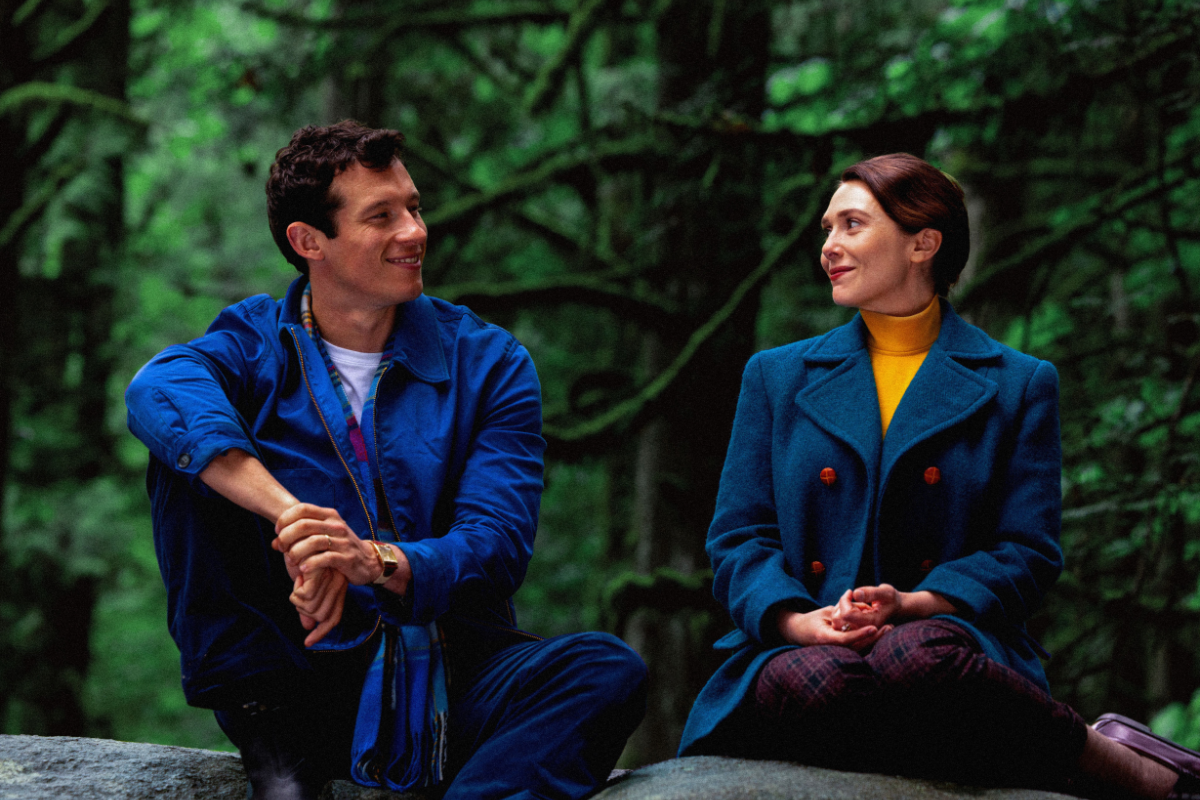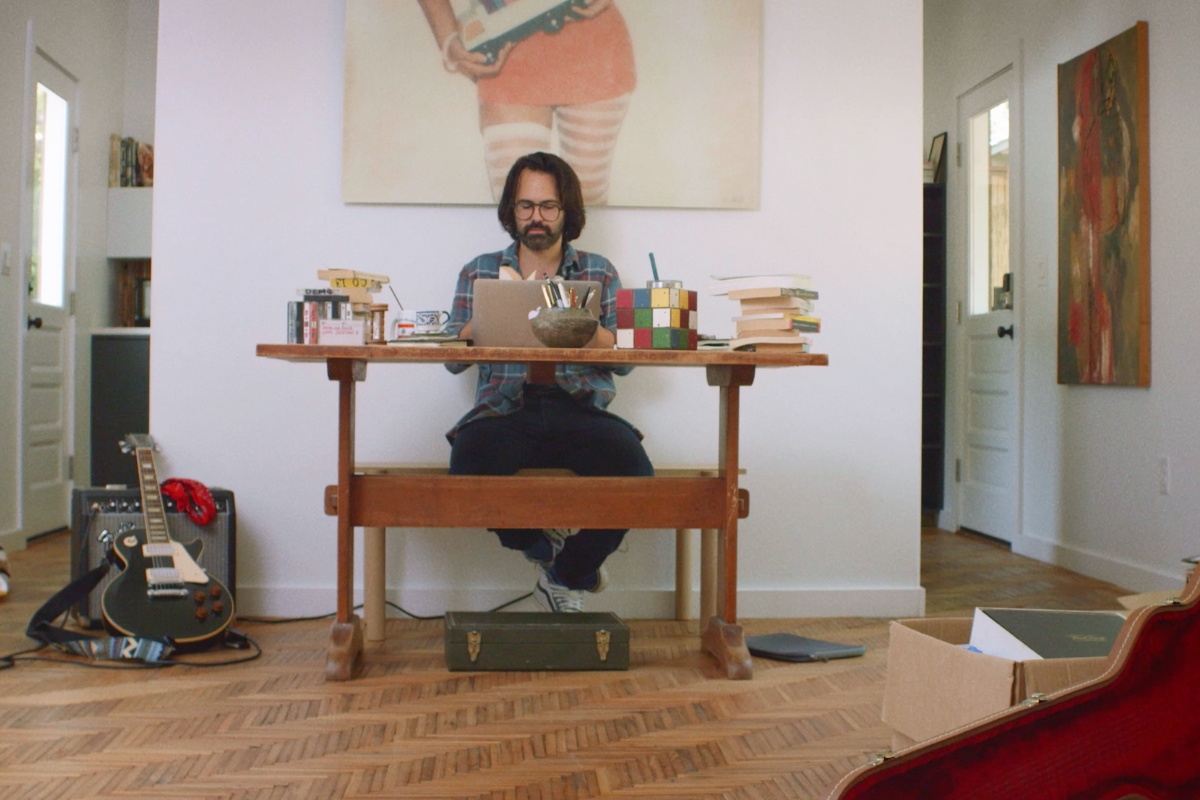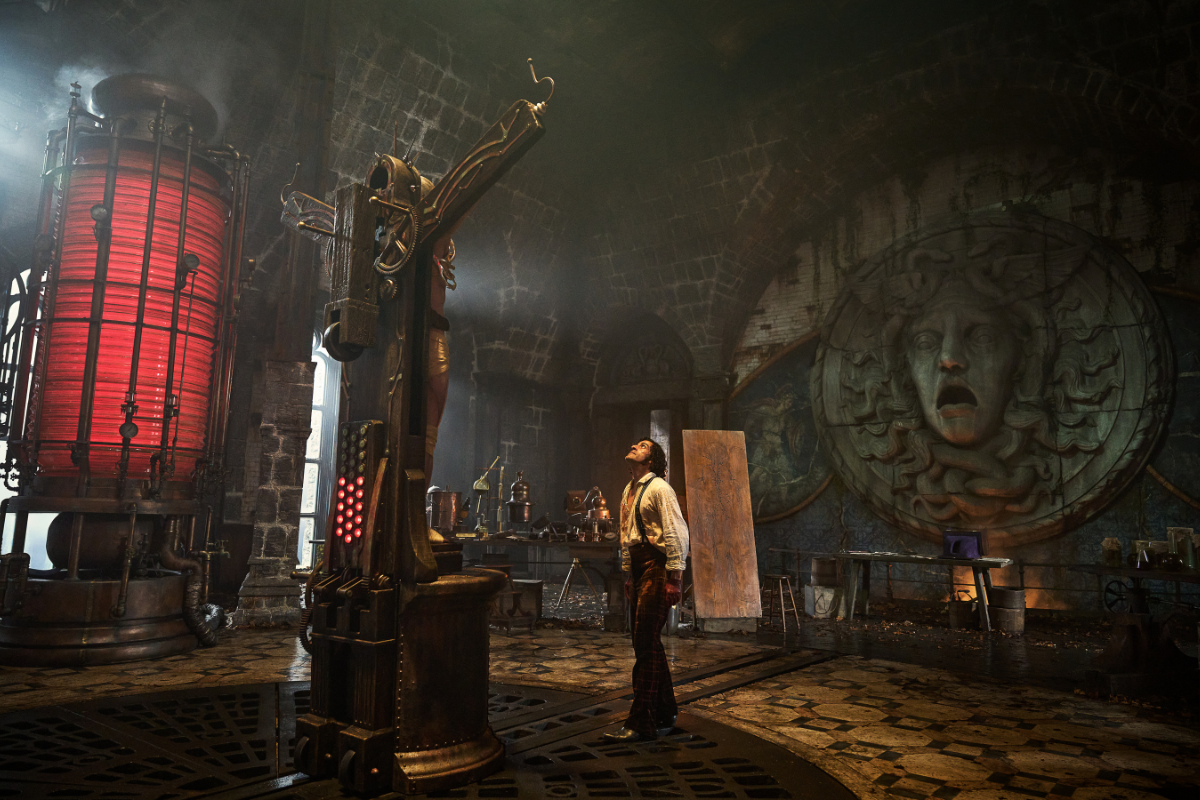SCRIPT SECRETS: Low-Budget Screenwriting, Part 2
What exactly *is* low budget? Does it mean no space ship battles? Just a small drama? Writing for budget is complicated, and a small drama might be more expensive than an action screenplay. In Part 2, we look at the importance of Genre, how Interesting Structures can elevate your story, and avoiding the Uncontrollables
Producers are often looking for low-budget screenplays, but what exactly *is* low budget? People often answer that means no explosions, or just a small drama, and definitely not science fiction! But writing for budget is much more complicated than that; and as I said in part one, a small drama about a family trying to save their farm from foreclosure might be more expensive to make than a science fiction screenplay. I look at all of the things that make a screenplay low budget in my Write It Film It book. A drama about saving the family farm can be much more expensive to make than a science-fiction screenplay because it may have many different locations and a huge cast of extras as well as rainstorms and kids and other things that we will talk about here in part two.
THE NEXT 5 STEPS TO A LOW-BUDGET SCREENPLAY
In part one we looked at the first five of the 15 Steps To A Low-Budget Screenplay culled from my Write It Film It book, and here we are going to look at the next five. Each one of these steps may require that you retrain your brain to think in terms of budget. Though these 15 things are aimed at writing a low-budget screenplay to sell, they also work for writing a low- or no-budget screenplay to make yourself. We have looked at the importance of limited locations and a great central location, and now we are going to look at the other important things, like...
6) GENRE
The most important thing to consider when writing a low-budget screenplay is the genre. Even if you are writing an indie script to produce and direct yourself, genre is critical. The “trap” that people fall into when writing a low-budget screenplay is to make it a simple drama—a stage play with no explosions or anything else that’s exciting... which gets into Dog Juice which we will discuss in Part 3. The problem is—a producer is looking for a screenplay that will make much, much more money than it costs to produce. Dramas? Don’t make money. Sure, they win all of the awards, but for years now the big problem has been that *Oscar-winning* dramas don’t make any money. Only a very small people want to see them *after they have won Best Picture*. So your small dramatic screenplay? No market. But take that same story and turn it into a horror movie or a thriller or an action flick? Now there is a hungry market!
Genre is an envelope that can hold almost every kind of story, and genre is one of the ways that your story can reach a larger audience in the low-budget world. Even if you are making the film, you will want the largest audience possible for your movie so that it will make your money back. Filmmaker Gary King has a low-budget film called Among Us (2017) about a husband and wife trying to deal with the death of their child after an accident that has left the husband confined to a wheelchair, and the guilt and anger and pain that never really goes away. This could easily have been a typical small drama, but the story is told as a horror movie with the ghost of their child haunting them as they try to go on vacation to escape the pain. You get all of the drama... plus the scares!
By putting your indie drama into a genre, you can attract both the genre audience and the drama audience... which is twice as many downloads on Amazon if you are self-distributing. One of the things to consider is which genres are popular and which genres are dormant or dead right now. Though some people think that there is no guarantee that what is popular now will be popular by the time you finish the screenplay, it takes a long time for a genre to die. They keep announcing that horror is dead every couple of years, and then some horror movie comes out and becomes a big hit... and horror is alive again! Anything popular now will probably be popular by the time that you finish the screenplay... and anything dead or dormant right now will probably still be a tough sell when you finish the screenplay.
In the “mainstream world” low-budget films are all about genre—there are horror fans and action fans, and when it comes to made for cable films you have Lifetime and SyFy Channels and Hallmark... all of them have a genre or two that they are known for. There are “meat and potato” genres like horror and action and all of the other stuff that pops up in Red Box that you may have never heard of... take a trip down to 7-11 and see what’s in the Red Box! The way to make sure your story reaches the largest audience or the largest number of potential script buyers is to put your story in a specific popular genre envelope. This means that you will need to know that genre inside and out, so you need to be a fan. If you want to write a script aimed at the SyFy Channel, you should be watching a lot of their movies. If you want to write a script to sell to the low-budget horror world, you should be watching those films. The same with low-budget action or low-budget family films or faith films or Hallmark movies.
You should understand the genre... even if your plan is to subvert it. I call this “you are what you eat.” I don’t understand people who want to write a horror movie because it’s easier to sell... but hate the genre. If your heart isn’t in it, you are going to do a terrible job writing it... and the screenplay will not sell. One of the things I always say is to write the kinds of films that you regularly pay to see in the cinema every week, and that adapts to watching on a cable network like Lifetime or Hallmark of SyFy, or renting from Red Box or watching on Amazon Prime or Netflix.
Because you need to know the genre inside and out, I always suggest that you grab a stack of films in the genre and *study them.* Look at things like pacing and when the story beats hit. Also, know what has already been done before, so that you can have something that they *haven’t* seen before. What’s your genre?
7) INTERESTING STRUCTURE
Another thing that you can do that costs nothing... or might even lower the budget, is to make your story unique by using an interesting structure. Just because a film is a thriller or a horror movie doesn't mean it's stale and boring. Run Lola Run (1998) is a great example of a wild, imaginative story that is still a fairly basic "beat the clock" thriller. Each of the three acts of Lola shows the exact same sequence: Lola has to race across town to get enough money to keep a gangster from killing her boyfriend. But each time, variables change the outcome of her run: she hurts her leg, she gets hit by a car, she hops a ride in an ambulance, etc. Not only is this a cool idea, but it also saves money! They film the same scenes three times, just adding the variable! This was also done in the Blumhouse horror film Happy Deathday to You, with a Groundhog Day twist. A young woman wakes up on her birthday, and ends up being murdered by a horror-movie-style slasher... and then wakes up and relives it all over again. She must figure out who her killer is to stop her death from happening. So, we have the same handful of locations used again and again, with the same actors at those locations, and like Lola, the difference each time they film it are the variables that might change the outcome.
I am a fan of low-budget filmmaker Paul Osborne, whose Rashomon (1950) like thriller Cruel Hearts (2019) tells the same story from three different character perspectives, so the cast and number of locations can be limited because we see many of the same things from different angles. The story has a great hook with a handsome young man going into a Soprano's style mob bar in the morning and sitting in the mobster’s booth as he’s going over the books from last night... and admitting that he’s been sleeping with the mobster’s wife! There are three main characters: Mobster, Wife, Handsome Young Man, and only a handful of secondary characters, and only a handful of locations. We see the first third of the story from the Mobster’s point of view, the second third from the Wife’s point of view, and the last third from the Young Man’s point of view. What’s great about this is that the story seems to completely change from the different points of view. There’s a great *line of dialogue* from the wife that you think means one thing when the husband hears it, but actually means another thing when the wife says it. Clever writing is required when you don’t have a lot of money, whether you are making the film yourself or selling the screenplay to someone else.
Like having a high concept, coming up with an interesting way to tell your story costs nothing... and might even save you money... and can make the story different than anything else, interesting, “arty,” and clever. I saw Cruel Hearts at two different film festivals where it was featured... in the same week! When you are trying to write a great screenplay that can be made on a limited budget, the pressure is on the writing itself. When you don’t have money, you have to use great writing and amazing ideas and fantastic dialogue and extra creativity to make up for the lack of cash. We’ll take a closer look at how important our screenplays are to low-budget movies in Part 3, but consider things like an interesting structure or storytelling method as a way to make your horror, or action, or whatever screenplay, stand out from the rest.
8) LIMITED SPEAKING ROLES
Low-budget and Indie movies don't have casts of thousands... or even casts of hundreds... and sometimes not even casts of tens. Every speaking character has to be paid SAG minimum which is $1,005 a day for theatrical, $630 a day for Low Budget, and $125 a day for Ultra-Low Budget and Student Films. Those are not what the stars get, those are what that Waiter makes who has that one line where he tells the star what today’s specials are and then takes their order. The stars can make a million dollars per film on a low-budget flick... and I have written movies where that’s what the star was paid. Stars take a huge chunk of the budget, and name supporting actors all have a daily and weekly and per-film quote and those roles can add up. And their payment is just the beginning! You have to feed and clothe and snack and makeup all of these people! And provide dressing rooms and everything else. It’s not unusual for an actor to cost you twice (or more) what you are paying them per day in other costs. Let’s say you have a character who wears a nice suit in a scene—they will probably need at least two suits in case one gets dirty while shooting that scene. If the scene requires food or drinks that could spill, or a fight or something else that makes that nice suit even more likely to become soiled in the middle of the scene? Maybe 3 suits... for one scene! Now, how many scenes do you have and how many actors? These things add up!
I mentioned Disappearance of Alice Creed in part one—that film has three actors in a two-room apartment (three rooms, if you count the bathroom) and plenty of twists and excitement. The story is about a wealthy young woman who is kidnaped by a pair of criminals fresh from prison... one of them is Alice’s ex-boyfriend. She doesn’t know that, we don’t know that... it’s a twist. Will Alice and her ex figure out a way to steal the ransom money together? The great thing about three characters is that there are lots of combinations of double-crosses! You don’t need a dozen actors!
The fewer speaking roles the better. Try to keep it at ten to fifteen speaking roles. Again, that’s a ballpark, so if you have 17 speaking roles you are probably still okay... but *try* to keep the numbers down. Fewer characters actually make for a stronger script because you are forced to make sure every character has a specific purpose in the story. That Waiter who reads the specials and takes the order? Why not just start the scene *after* they have been served? With fewer characters, each has more screen time and that means more depth and drama per character. If you have 30 speaking roles in a 90-minute film, that’s what? Three minutes per character?
Also, limit (or completely eliminate) the number of extras and crowd scenes. You may think nothing of having a scene in a poetry reading, a scene in a restaurant, and a scene at a concert... but that's three crowd scenes where you will have to pay $100 per person to fill the location. The most you can afford is *one* "extra location," and make sure we're talking about a dozen extras, not a hundred. It’s easy to write a scene at a baseball game or a theme park or a concert or a wedding party or any of the other events that require a whole room full of extras, but that is a budget breaker. I mention Cruel Hearts, and that has scenes in a bar either before the bar opens or in that first hour of opening when it’s the hardcore alcoholics and nobody else. The scenes were written for when the bar was empty—so we don’t expect anyone to be in there! Try to avoid all crowd scenes if possible... nobody comes to see that background actor in the film except their mom.
9) CONFINED CAMEOS
The key to a low-budget screenplay is maximum production value at minimum cost. So we want to limit our speaking roles... yet still figure out ways to hire recognizable actors to be in the film in addition to that star that is being paid a chunk of the budget. The best way to do this is to have a couple of juicy character roles that can be cast with known actors who never leave one of your locations. Put your mentor character in that 24-hour coffeeshop location that your lead goes to at 3am and have her dispense wisdom in a series of scenes woven throughout the script. Let's say you have four or five 3am coffeehouse scenes that are each about two- to three-minutes long—those can be filmed in a single (long) day. Hire a known actress for that mentor role and it will seem like she's in the whole movie! That’s what Cruel Hearts did (though it may have been two days of shooting).
In Down and Dangerous (2013) the lead character’s mentor is in prison... so there are several scenes in the prison’s visiting facilities where the lead character gets advice on how to run his (illegal) business. Because the character is in prison, they really can’t go to some other location with the lead character, right? The Breakfast Club’s Judd Nelson played the mentor, and his name is on the DVD cover and was on the poster when I saw this film in the cinema. Probably worked for a day or two.
One of the things that can help a confined cameo character maximize their screen time is to minimize their movement. In my embarrassing Droid Gunner flick for Roger Corman, I wrote a Jabba The Hutt like mobster who is mostly shown on his throne ordering people killed, or interrogating our hero—he is almost always on that throne. That allowed them to light the actor who played that role (the late great Robert Quarry, star of a bunch of 70s horror hits like Count Yorga, Vampire and Dr. Phibes Rises Again) and shoot most of his scenes without ever changing the lighting or the main camera angle. I also have the hero’s boss, who is always in his office, and usually behind his desk. You don’t need to stick all of these characters in a chair or behind a desk, but if you put someone at a location, don’t have them wander all over the place so that they keep having to take the time to change the lighting constantly.
On Droid Gunner I wrote a “confined cameo” at every location—so it seems like an all-star (B movie) cast. There was a seedy spaceport bar, where the bartender was the confined cameo, there was the main villain who was always shown in his office... even in a TV commercial that plays on a screen at another location. There was a gunslinger security chief in underwater “New Angeles” who has three or four scenes with the hero... every location had a role written to be played by a name actor... if they could find one.
You want these roles to be “star magnets”—juicy roles with great dialogue that will be attractive to those actors hired for a single day or maybe two days. They know that the producer is getting their name on the poster to help sell the film in exchange for only a day’s work, so there has to be something in it for them. If these are flashy, interesting characters with great dialogue the actor will think it’s worth it. Actors want to act! A few juicy character parts like this (each one confined to a single location) woven through the entire script, can give your script an All-Star Cast, without the producer spending much money. If they don’t hire a star in that role, it’s still a juicy role!
10) UNCONTROLLABLES
There are a whole bunch of things that are difficult to impossible to control, and will drive up the cost of a low-budget film or indie film or made for TV film or a film that you are making yourself, so you should do everything that you can to avoid them. They are Kids, Animals. Weather, Night, and anything else that you can not control.
W.C. Fields was right about working with kids and animals, but from a cost standpoint, both are expensive for similar reasons. Kids are, by law, only allowed to work a half-day on a film set—so you pay them the same as an adult and only get half as much work out of them! Add to that, they are required to have an on-set teacher (you have probably seen teachers in the end credits on a movie) and an adult to supervise their work on set to make sure that they aren’t being harmed physically or emotionally. So, for every kid who can only work a half-day, there are these adults who need to be paid a specialist rate... who aren’t even in the film!
Same with animals, who need to be specially trained and have a trainer on set. Often multiple identical animals are required because each is trained to do a specific number of tasks, and the dog that has been trained to get the beer from the refrigerator is not the same dog that can open a door. Animals, like kids, also are often completely uncooperative. They can become cranky and tired and that’s the end of their workday, even if it’s the middle of the shooting day. And sometimes they poop at inconvenient times. It’s easy to write a scene where a bird lands on someone’s shoulder, but expensive to train a bird to do that.
This is why those teenagers in movies sometimes look like their pushing 30... they are played by actors who are 30! I have had a couple of scripts about tween kids become scripts about 16-year-olds in rewrites so that an adult could play the role... and one Kids Film where the story was rewritten to be about one of the parents so the kid would have less screen time (and less expensive production time). It changed from a story about a kid, to a story about the kid’s mom!
Writing a scene where it is raining or snowing is much easier than making it rain or snow on command—which is impossible as far as I know. When it rains in a Hollywood film, there is a giant structure built over the house or street and a crew of technicians that create the artificial rain (or snow) for the scene. This costs a bundle. I worked on a friend’s low-budget horror flick where a group of people were supposed to be snowed in... except when we got to the usually snowy mountain location, they had no snow! Basically ruined the story because there was no money to do the Hollywood snow thing. Much less expensive if the script just doesn’t have any unusual weather in the first place.
Night? Are you crazy? Well, Night Exteriors can be a big problem, because you have to light them—and that can be very expensive. There’s a photo bouncing around the internet that shows how they lit a freeway scene from Once Upon a Time in Hollywood that shows dozens of huge lights on cranes over a closed section of the freeway—so that they could show people driving on the freeway at night. All of the things that you want to have show up on film—the buildings in the background, the trees in the background, anything in the background—needs to be lit. And that’s a lot of huge and expensive lights, and a lot of crew members to operate those lights and the generator that powers them.
Often low-budget films will find a section of the city that is already lighted and use that—we did that on my Grid Runners (HBO World Premiere)—but that means the scene has to take place where the light already exists.
Here’s the key to Exterior Night scenes—if two people are having a conversation they have to be right next to each other (same lights, no background between them) rather than on either side of a parking lot having a conversation while getting into their cars. So, just try to avoid Exterior Night if possible. Interior Night is fine. I realize this screws up that low-budget horror script you wrote, sorry... but maybe it’s cooler if it takes place in broad daylight? You are avoiding a cliche!
Also in here are any special effects or stunt or anything tricky that you don’t know how it will be done. The first thing a producer will ask you is: How do you expect us to do this on our budget? And if you have an answer for exactly how they can do that special effect or stunt for no money, great! It can stay in the screenplay. If you don’t have an answer, you should probably take it out before you ever show it to the producer. I usually try to have an answer that a ten-year-old can understand with stuff like this.
The problem with all of the “uncontrollables” is that they cost extra money for technicians or experts or teachers or trainers who don’t show up on the screen. You want every cost to show up on the screen. Hey, sometimes you are writing a kid and dog holiday script, and you can’t help but use all of these things... unless they have you rewrite your dog script to be about the dog’s owner.
I know that these ten things may sound impossible to you, but these and the next five are the basics of low-budget screenwriting. There are thousands of movies made that have done these ten things and the five that we discuss in the next chapter, and you have probably seen a bunch of them! Grab a handful of Blumhouse Films that you probably saw in the cinema and count the locations and speaking roles! In the next part, we are going to look at the importance of Dog Juice and Imagination Harvesting, two things that get whole chapters in my Write It Film It book!
Good luck and keep writing!
[Editor's Note: Check out Bill's entire screenwriting book series on Amazon!]
Mastering the Conventions of Horror Writing
William C. Martell has written 20 produced films for cable and video, including three HBO World Premieres, a pair of Showtime films, the thriller Hard Evidence (Warner Bros.), and the family film Invisible Mom. He wrote an original horror script for a popular streaming service that was released October of 2023. He is the author of The Secrets of Action Screenwriting. Follow William on Twitter: @wcmartell.







